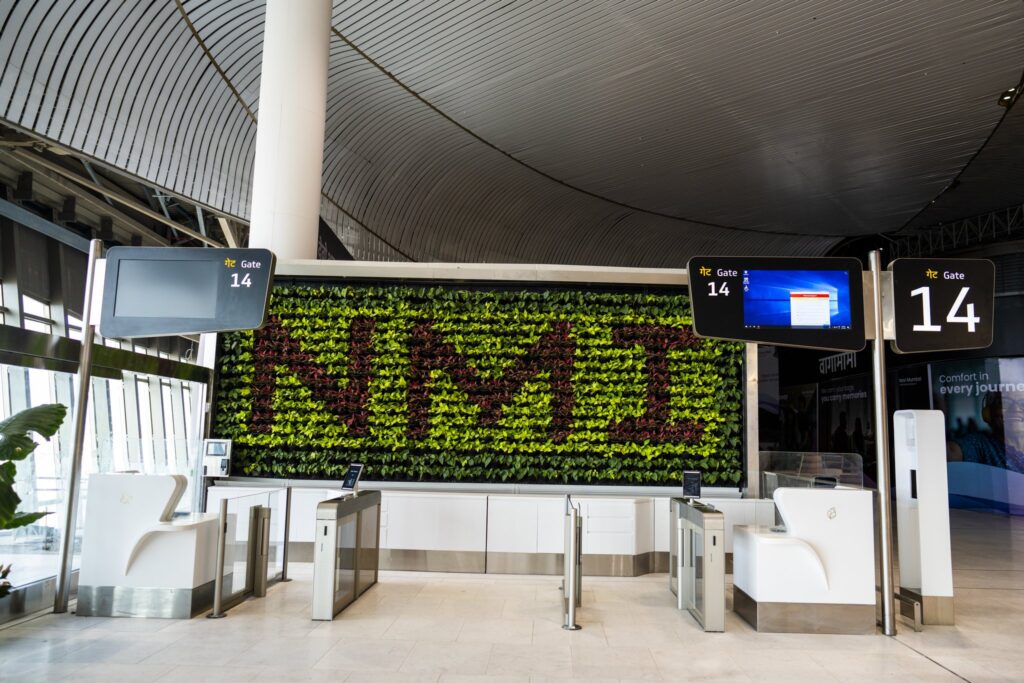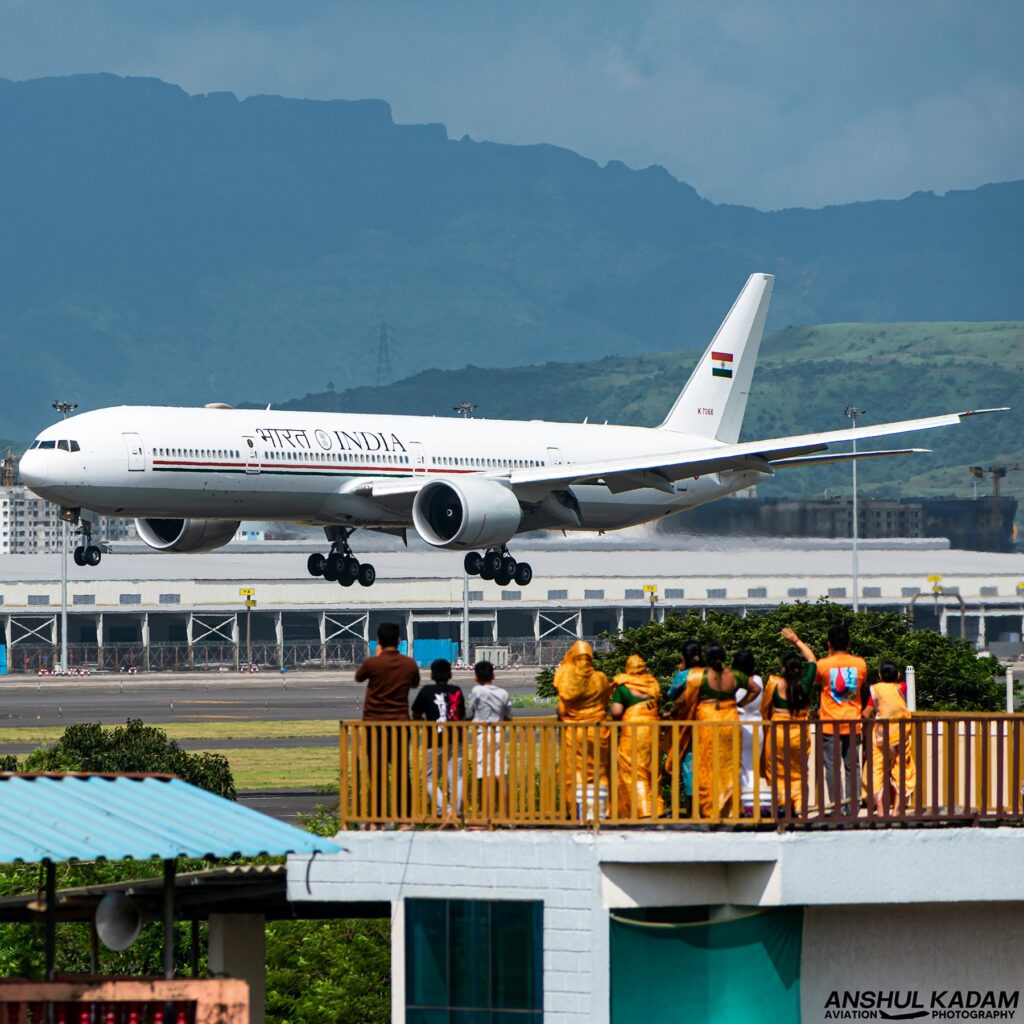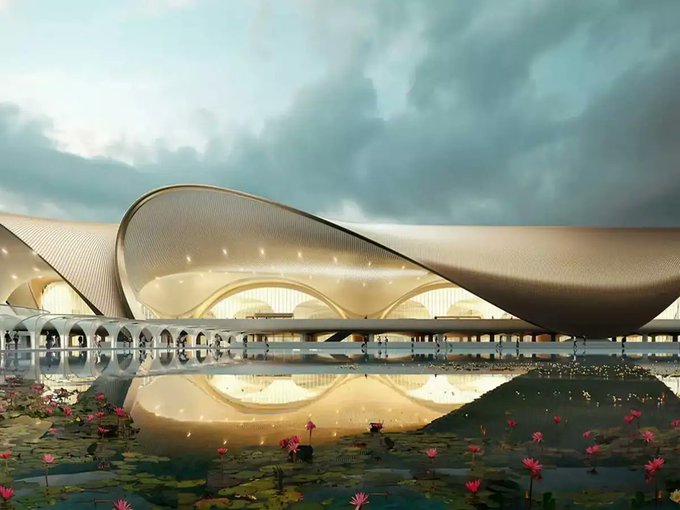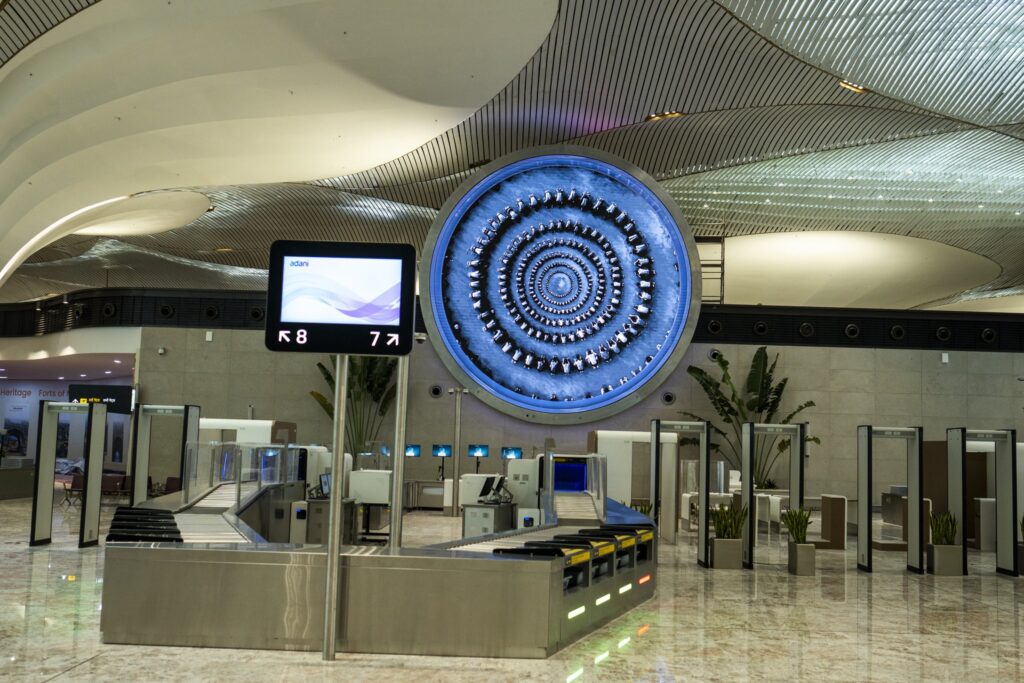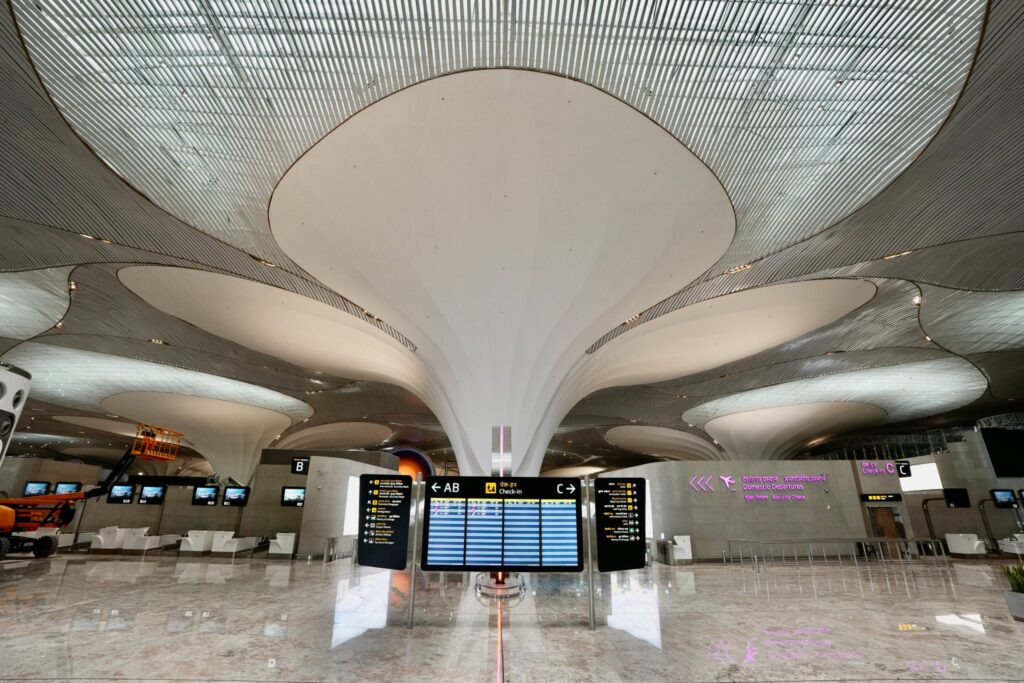Mumbai / Navi Mumbai — October 6, 2025
In a definitive announcement marking a major milestone in India’s aviation infrastructure, Gautam Adani, chairman of the Adani Group, confirmed that the much-anticipated Navi Mumbai International Airport (NMIA) will officially open for operations on October 8, 2025. The revelation came during a site visit and a meeting with the myriad workers, engineers, artisans, and staff whose efforts have driven the project to its final sweep of completion.
In remarks released to the public after his meeting with on-site workers, Adani expressed his gratitude to “every hand that worked and every heart that cared.” He specifically acknowledged differently-abled workers, women staff, construction laborers, security personnel, engineers, and artisans as integral contributors to turning the vision into reality.
A Long-Awaited Milestone
The announcement comes after years of planning, delays, and intensive construction. NMIA is designed to serve as the second airport for the Mumbai Metropolitan Region — alleviating pressure on the existing Chhatrapati Shivaji Maharaj International Airport (CSMIA) — and to reshape aviation connectivity for western India.
In recent weeks, momentum had visibly accelerated. The Directorate General of Civil Aviation (DGCA) granted the airport an aerodrome license, signaling regulatory approval to begin operations. In parallel, media and official sources had reported road and traffic management measures in Navi Mumbai to support the inauguration event on October 8, including curbs on heavy vehicles and traffic rerouting.
Prime Minister Narendra Modi is slated to preside over the inauguration ceremony, anchoring the event as a high-profile national infrastructure launch.
Adding to the sense of finality, the Centre has officially cleared the name of the airport: it will henceforth be known as D. B. Patil Airport, Navi Mumbai International Airport.
The Worker Visit: Symbolism Meets Substance
Adani’s visit to the airport site ahead of its launch was more than ceremonial — it was a gesture toward acknowledging the human labor behind the vast infrastructure. He met with frontline workers during the final stretch of finishing touches. In his public statement, he expressed that the airport is “their creation,” recognizing that it is as much built by the workforce as by boards and blueprints.
According to media reports, his remarks also aimed to send a message of inclusivity: workers with disabilities were specially recognized, and women staffers and security personnel were among those thanked. The gesture underscores the Adani Group’s intention to portray the airport not merely as a corporate achievement but as a collective accomplishment involving diverse contributors.
Technical and Operational Profile
Structure and Capacity
In its first phase, NMIA is being launched with a single runway configuration capable of serving both domestic and international flights. The airport covers about 1,160 hectares and is being developed under a public-private partnership (PPP) structure via Navi Mumbai International Airport Limited (NMIAL), a special-purpose vehicle with Adani Airports Holdings Ltd and CIDCO as key stakeholders.
Initial operational capacity is expected around 20 million passengers per year (MPPA) for the first phase. Over time, as subsequent phases roll out, NMIA is designed to scale operations up to 90 MPPA, with expanded cargo handling capabilities.
The airport’s architectural plans, reportedly influenced by a “lotus-inspired” layout, aim to position NMIA among world-class facilities — not just in India, but globally — in terms of user experience, efficiency, and design.
Connectivity & Infrastructure Support
To ensure seamless connectivity, NMIA’s road access will leverage the Atal Setu, which cuts travel time from South Mumbai to Navi Mumbai. In parallel, CIDCO has planned extensive link roads — the Ulwe Coastal Road (UCR) and Kharghar Coastal Road (KCR) — to integrate the airport with the surrounding nodes and Mumbai’s transport spine. Completion of these supplementary road links is projected by early 2026.
On the rail and metro fronts, NMIA is slated to connect with Navi Mumbai Metro Line 1 and is proposed to be tied into Mumbai Metro’s Line 8 (Gold Line). Such integration is critical to reduce surface congestion and ensure multi-modal access.
Flight Operations
While full-scale operations are expected to roll out progressively, airline commitments have already begun. IndiGo is set to be the first carrier to fly from NMIA, with plans to connect over 15 cities from Day One.
Jeet Adani, Director (Airports) at Adani, has projected that the airport will begin with 60 flights a day, scaling up eventually to 300 daily movements within six months. In preliminary statements, domestic-to-international flight ratio expectations are projected around 4:1, though flexibility is built in to expand international connections as demand evolves.
Adani’s broader plans also envisage cargo operations, ancillary services, MRO (maintenance, repair and overhaul) facilities, and even passenger transit infrastructure — making NMIA more than just a point of takeoff and landing.
Strategic Significance & Expectations
Relieving Mumbai Airport Pressure
CSMIA, Mumbai’s existing international airport, has long faced capacity constraints, runway congestion, and operational bottlenecks. With NMIA’s entry, a portion of traffic — including private jets, charter services, and general aviation — is expected to shift to Navi Mumbai, opening breathing room for CSMIA to manage growth more sustainably.
NMIA’s design allows phased scaling: as demand rises, new terminals and runways will be added to absorb traffic growth.
Regional Growth & Economic Impact
Beyond aviation, NMIA is expected to act as an engine for economic growth in the Navi Mumbai and Raigad region. The airport’s presence will likely stimulate real estate development, hospitality expansion, logistics, employment generation, and ancillary services across the region.
To support this, reports suggest that the Adani Group plans to invest an additional ₹30,000 crore in expansion and city-side development over coming years — on top of the investment already committed. By implementing commercial zones, aerocity infrastructure, retail, and mixed-use development, NMIA is poised to evolve into a full-fledged aviation-driven urban node.
Furthermore, Adani Airports has publicly indicated ambitions to list its airport business by 2027, leveraging NMIA as a flagship asset in its portfolio of aviation infrastructure across India.
Challenges & Risks to Watch
While the outlook is promising, several challenges and sensitivities merit close attention:
Safety & Environmental Compliance: Activists have raised concerns about illegal slaughterhouses and meat sales resuming within 3 km of the runway, potentially raising bird-strike risks. The DGCA mandates minimal waste, carcass disposal, and wildlife hazard control within a 10 km radius of the airport zone. The airport authority has initiated monthly audits and a year-long Wildlife Hazard Assessment Survey to mitigate these risks.
Traffic & Last-Mile Congestion: On its opening day, the airport will require well-calibrated traffic control measures. Already, authorities have imposed restrictions on heavy vehicle movement in Navi Mumbai during the inauguration period (6 a.m. to 10 p.m.) to prevent congestion. But post-launch, sustaining smooth access will demand continuous coordination with civic bodies, transport agencies, and feeder services.
Phased Buildout & Cash Flow: Implementing large infrastructure in phases means that full utilization may lag initial investments. Ensuring consistent revenue streams through real estate, retail, and airport services will be vital to offset costs and maintain financial viability.
Regulatory & Airline Commitments: Securing a pipeline of domestic and international routes, obtaining clearances from foreign aviation regulators, and integrating into global schedules are essential. Any delays or reluctance from airlines to shift operations could slow intended usage.
Public & Political Expectations: Given the high-profile nature of the launch — with the Prime Minister participating — public expectations will be elevated. Any teething issues in the first weeks (flight delays, connectivity gaps, facility glitches) may be magnified in media scrutiny.
What to Watch in the Coming Days
1. Inaugural Ceremony & PM Visit
The world will watch how the October 8 ceremony unfolds, including speeches, symbolic flights, and media coverage. Modi’s participation underscores the national importance of the airport’s launch.
2. First Commercial Flights
After opening, airlines (starting with IndiGo) are expected to begin scheduling flights. Observing route selections, frequency, and passenger uptake will be telling about market response.
3. Operational Smoothness & Facility Readiness
Whether ancillary services — ground handling, customs/immigration, baggage systems, passenger amenities — deliver as designed will influence first impressions heavily.
4. Traffic & Access Management
The real test will be how well incoming and outgoing passengers can reach the airport via road, metro, or feeder transport. Any chokepoints or miscoordination may attract criticism.
5. Expansion Progress & City-Side Growth
As the airport enters phase two and beyond, how quickly terminals, cargo infrastructure, and commercial zones are developed will dictate whether NMIA stays ahead of demand or lags behind.
6. Commercial Viability & Revenue Mix
To ensure sustainability, success will hinge not just on flight operations but on airport retail, hospitality, real estate leases, and value-added services.
Gautam Adani’s announcement that October 8, 2025 marks the opening day of Navi Mumbai International Airport is a definitive moment — consolidating years of planning, construction, regulatory negotiation, and logistical orchestration. With staff, workers, and stakeholders finally seeing the finish line, the airport’s launch is expected to be a watershed in India’s aviation narrative.
From this point forward, the spotlight will shift from construction to operations — as NMIA’s ability to deliver on connectivity, passenger experience, safety, and growth will shape whether it merely joins India’s aviation map or becomes a transformative node in global aviation.
If you like, I can send you a shorter 800-word version optimized for digital publication or with a different angle (business, infrastructure, human interest). Would you like me to prepare one?
Related News: Read More

